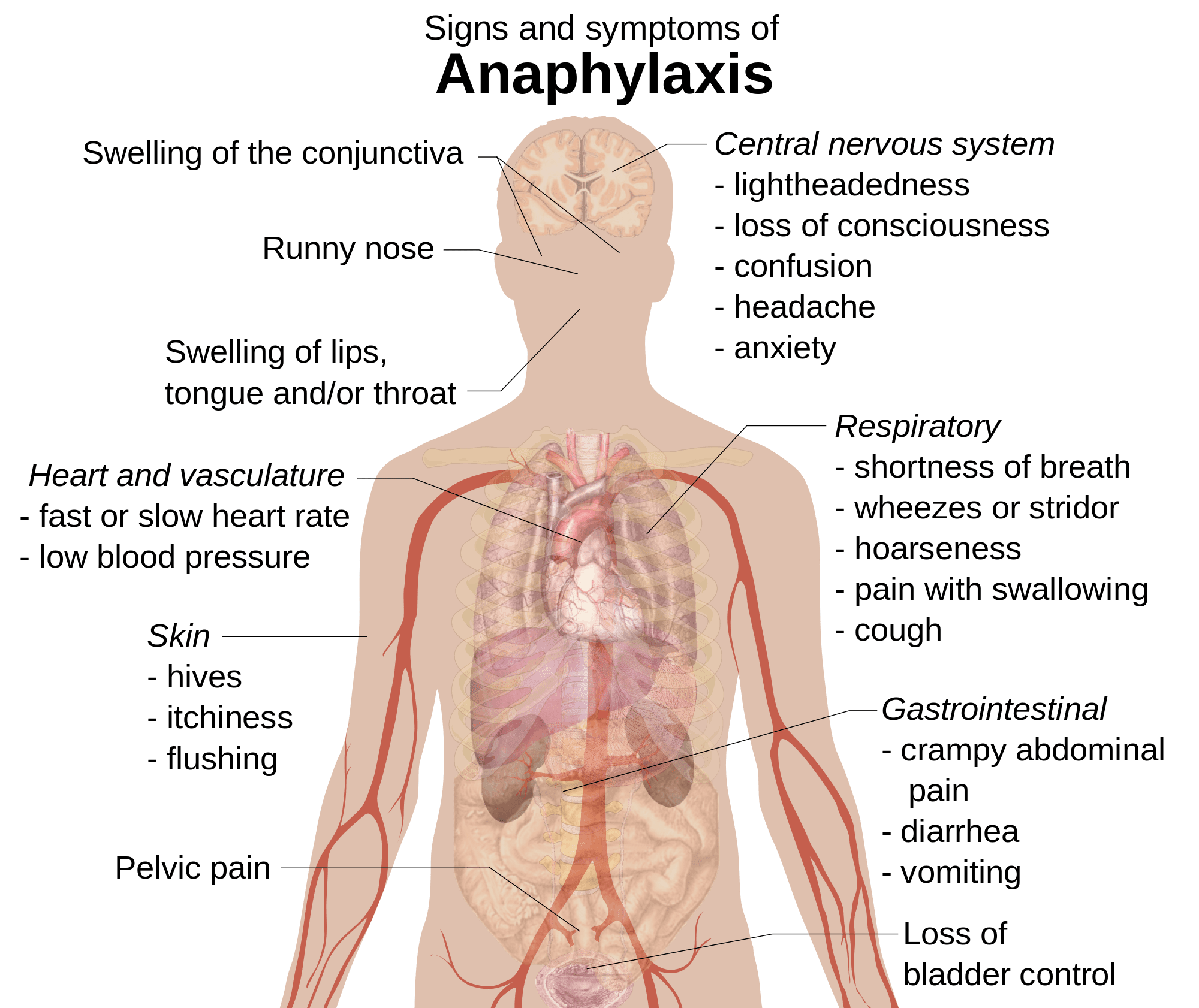Anaphylaxis, or anaphylactic shock, is the most serious allergic reaction that can cause death without prompt medical attention. If a susceptible individual is exposed to an allergen, or ‘trigger’, the person can have potentially life-threatening symptoms such as breathing difficulties.
An allergy occurs when the immune system reacts to a substance or ‘trigger’ in the person’s environment that is typically harmless to them. Their immune system responds by making an antibody that attacks the allergen which triggers a range of immune system reactions.
Allergies can range from mild, moderate or severe with anaphylaxis being the most severe allergic reaction. It is said that one in 200 people suffer from Anaphylaxis.
A recent study showed that 69% of people would not know how to help someone having a severe allergic reaction and 70% did not know how to use the life-saving EpiPen device.
Symptoms
- Facial swelling, including eyes and lips
- Swelling of the tongue & throat
- Redness of the skin
- Vomiting
- Hives or large welts on the body
- Abdominal discomfort
- Strained or heavy breathing
- Coughing
- Dramatic drop in blood pressure
- Unconsciousness
- Pale and clammy skin
Triggers
- Food – common allergens shell fish, eggs, fish, milk, peanuts, tree nuts, sesame or soy products
- Insect Venom – including bees, ants, ticks or wasps
- Medicines – some include penicillin & aspirin
- Exercise
- Latex
- Anesthesia
Risks
It is still unknown why, but some individuals who suffer from asthma and eczema are at a higher risk of suffering from Anaphylaxis.
There are a few ways in which Anaphylaxis is diagnosed, these include:
- Previous Medical history
- Examination of an individual’s physical symptoms and signs
- Medical questioning of the time prior to the event
- Bloody tests
- Skin prick tests
Treatment
- Adrenaline injection
- Adrenaline auto injector or EpiPen – this is carried by an individual who has been diagnosed with anaphylaxis previously.
- Referral – to the hospital or medical specialist.
- Call 000 immediately when an individual is suffering from anaphylaxis
Prevention
- Avoiding triggers
- Education on how to identify triggers – this is especially important for parents and children
- Telling teachers, friends and workmates – this allows individuals to know how to treat someone suffering from anaphylaxis and they will know the cause of there event.
- Wear a medical alert bracelet
References

